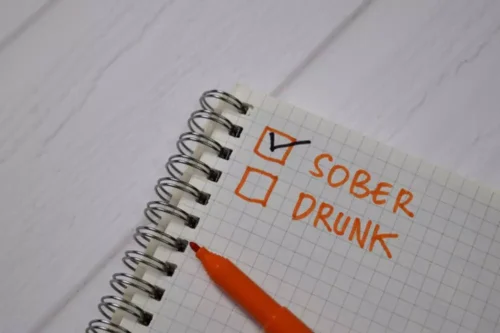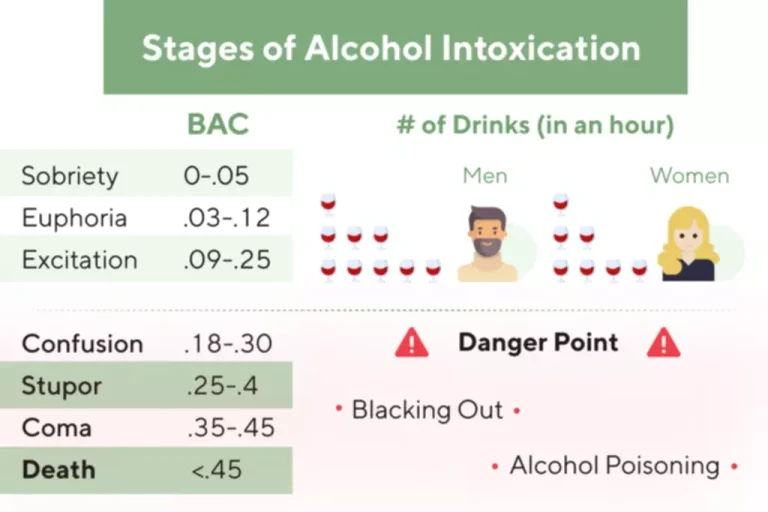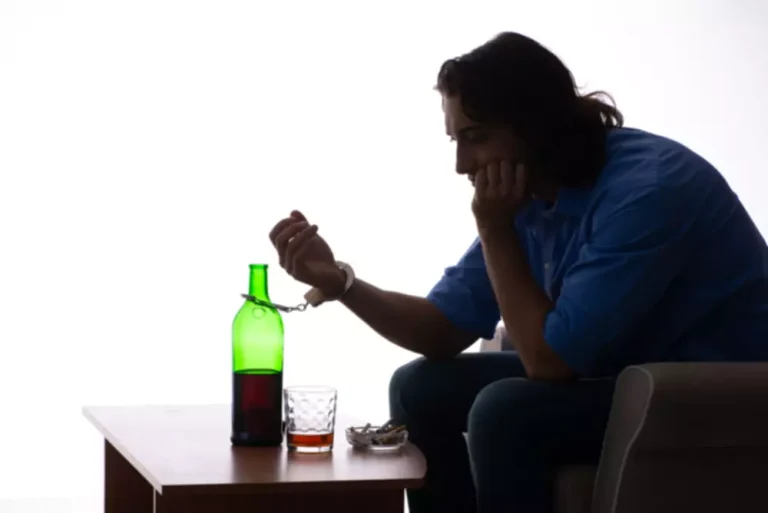
Denial keeps them from getting help and taking the steps they need to take to get better. By knowing how alcoholism denial works, people who are dealing with addiction and those who care about them can work together to help each other get on track and stay better. How can you determine the best treatment fit to help your loved one get sober? Understanding a Twelve Step Recovery Program for alcohol addiction and the importance of ongoing recovery programming and support groups.
- Stigma is one reason people struggle to admit to having a drinking problem.
- After all, they have managed to maintain the appearance of success despite their addiction.
- You can never force someone to accept their AUD or make someone quit drinking.
- Dietary Guidelines define moderate drinking as one drink per day for women and up to two drinks per day for men.
Alcohol Rehab Aftercare and Ongoing Support
It’s that inner voice saying, “I’m not that bad,” or “I can stop whenever I want,” even when the facts say otherwise. However, certain food groups also have benefits when it comes to helping with the discomfort of withdrawal symptoms and detoxification. Individual therapy, combined with marriage or family https://ecosoberhouse.com/ counseling, can strengthen your self-esteem and help you build a healthy, sober relationship. Keep communication open without judgment, and listen to their experiences and concerns. By showing empathy, you may encourage them to feel more comfortable discussing their addiction and seeking help.
- The ability to recognize harmful behaviors and the negative consequences of drug use is an important aspect of a person’s recovery.
- The current analyses focus on inaccurate denial of current AUDs in individuals who report themselves as light or moderate social drinkers.
- Therapy plays a crucial role in recovery, with options like cognitive-behavioral therapy (CBT), motivational interviewing, and family therapy.
- It should not be used in place of the advice of your physician or other qualified healthcare providers.
- If you’re the loved one of someone in either group, it’s important to know how to deal with an alcoholic effectively if you want to help them get well.
How to Talk to an Alcoholic in Denial
It’s important to approach the situation with love and support rather than judgment or criticism. Searching for ‘how to help an alcoholic in denial’ can be a step filled with uncertainty and concern. This article provides clear, empathetic guidance designed to support you as you support them. Learn effective ways to communicate, establish boundaries, and encourage professional treatment—all crucial elements for aiding a loved one who may not yet recognize their need for help.
Helpful resources
Treatment options for alcoholics in denial vary based on individual needs but may involve a mix of therapy, counseling, support groups, and self-care practices. The key is to create a personalized recovery plan tailored to address both physical and emotional needs to sustain long-term sobriety. Treatment and recovery for an alcoholism and denial begins with selecting the appropriate course of action. This often involves combining various forms of therapy, counseling, and support groups.

Often, this is due to factors such as shame and fear, but it can also be because people genuinely do not accurately see or understand how their drinking has become unhealthy. We are available to explore addiction treatment options that can help you or your loved one get the assistance needed to start recovery. It is important to recognize that just because you have realized that your loved one may be in need of an alcohol addiction treatment program, that does not mean they will agree.


Researchers say that experiencing family, work, and legal problems significantly increases the likelihood that people will enter AUD treatment.[4] Getting arrested or fired are two consequences no one can deny. The person might claim they can stop drinking at any point, so one sip won’t hurt. They may also claim that they’re truly in control, no matter what it might look like to an outsider. People with AUD need treatment before their drinking patterns become ingrained and harder to break. You may need to discuss the problem repeatedly before the person hears, understands, and acts on your concerns.
I’m Seeking Help

Denial can become a sort of defense mechanism for them, allowing them to continue on this destructive path. You, too, might realize that your relationship with alcohol is negatively affecting your life. There are groups, like Al-Anon, that offer support to people who are struggling or suffering because of a family member’s alcoholism or addiction. When this happens, all members should address the effects of alcoholism on themselves individually and as a family unit. Sometimes this means attending Al-Anon meetings, while other times, it means removing yourself from the situation. Our analyses searched for potential correlates of one form of denial to help clinicians and researchers better understand denial and to optimize their ability to identify these individuals who might benefit from advice.
Educating Yourself on the Disease of Addiction
The Sober House Directory highly recommends any chartered Vanderburgh House home. Join our sober living community or refer a client, family member, or friend. Introducing Jake Janas, a compassionate and dedicated manager with a wealth of knowledge and expertise in the field of aftercare and addiction recovery. He currently oversees four sober homes in Springfield and Westfield, providing support and guidance to residents on their recovery journey. The Humphrey Sober Living Home for men offers a large and diverse sober home community.
The sober living home is conveniently located close to Mercy Hospital, in the heart of Springfield, Massachusetts. Vanderburgh Sober Living vanderburgh house prides itself on offering truly recovery-focused sober living based on the principles of NARR and MASH. We are proud to be the first structured and certified sober living home provider in Taunton, offering men’s sober living close to downtown.
Join our online community
For a directory of Oxford House locations in Massachusetts, please visit the Sober House Directory or Oxford House Massachusetts locations.
Sober homes screen guests for alcohol and drugs, enforce house rules and curfew, and each guest holds their brothers and sisters accountable. We offer a streamlined application process by accepting applications online and offering same-day approval in most cases. We understand the anxiety your clients face in a transition, as well as the challenges our referral partners face on a daily basis.
- Guests have engaged in the recovery home community as well as the broader recovery community throughout the Greater Charlotte, North Carolina area.
- The Men of Dignity 20 King Street Men’s sober house is operated by Vanderburgh House, headquartered in Worcester, Massachusetts.
- To learn more about becoming an independent operator with Vanderburgh Sober Living, please visit Vanderburgh Communities.
- House Mentors and staff lead and support each sober living home; helping to ensure a positive recovery environment for all guests.
- Structured Sober Living is a term used to describe a sober house with a set structure for guests, typically including a curfew meeting requirements, mandatory drug, and alcohol screening, and other recovery support services and amenities.
- Guests participate in weekly house meetings and community activities both as a home and independently.
Home Leadership – About Beacon of Light Sober Living in North Carolina
Vanderburgh Sober Living offers sober house guests structure as well as independence to rebuild their lives. All Vanderburgh Sober Living homes offer free wifi and cable TV, on-site laundry, storage, and plenty of recovery support services for men in recovery. Vanderburgh Sober Living Chartered Operators are proud to offer a growing number of structured and certified recovery houses in Massachusetts, Maine, Connecticut, Rhode Island, New Hampshire, North Carolina, and Illinois. Search sober living based on sober house location, gender served, and certification status. Vanderburgh House is a sober living operator headquartered in Worcester, Massachusetts, offering sober living for both men and women throughout the state. Vanderburgh House is the first and only organization offering charters for sober living homes in New England, each following a set of strict quality standards and offering unmatched service to residents.
Therapeutic Role of Art, Music, and Meditation During Recovery
We refer guests to our local care providers when they need a higher level of care, and work to maintain strong referral relationships with clinicians, case workers, court officers, and others in the field. We can often accommodate your move-in day within 24-hours of your application. Transitional housing is temporary housing for the working homeless population and is set up to transition their residents to permanent housing.
🏠 Elm Sober House Sober Living for Women in Worcester, Massachusetts
Sober living homes in North Carolina are certified by NCARR, the North Carolina Association of Recovery Residences. All Vanderburgh Sober Living recovery homes strictly follow NARR Certification requirements and work collaboratively with NARR’s state affiliates to improve the quality of sober living for all guests. Vanderburgh Sober Living is also a Certified B Corporation, and the first organization to earn this award in Worcester. The Rediscovery Recovery House is conveniently located in Downtown Springfield, with easy access to public transportation and area amenities.
Some people give up alcohol or other drugs temporarily, often for monthlong periods like Dry January, as a cleanse or a test for longer sobriety. But experts say it shouldn’t be confused with treatment for actual substance use disorders. If you’ve cut out other substances along the way, you may prefer describing your journey sober house as living “clean” rather than just sober.
Improved physical health
Sobriety in this context is an active, ongoing commitment to a set of behaviors and actions that support overall health and prevent relapse, making it an integral part of the recovery journey. However, it’s important to note that abstinence is not synonymous with recovery or sobriety. While abstinence focuses solely on the absence of the addictive substance or behavior, recovery and sobriety encompass a broader range of actions and commitments. These include not only abstaining from substance use but also engaging in a holistic approach to recovery that addresses physical, psychological, and social well-being. In this sense, sobriety is an active, ongoing commitment to a set of behaviors and actions that support overall health and prevent relapse.
A mental health professional can help you cope with some of the challenges you’ll face on your path to sobriety. By Michelle PugleMichelle Pugle writes health articles for award-winning websites, as seen in Healthline, Verywell, Everyday Health, and Psych Central. She has a Master’s degree, undergraduate degrees in English and Sociology, a diploma in Holistic Herbal Therapy, and is trained in mental health first aid, anti-violence work, and peer support work.
Jesus’ Teachings on Self-Control and Sobriety
Sobriety may refer to being clear of immediate or residual effects of any mind-altering substances. Colloquially, it may refer to a specific substance that is the concern of a particular recovery support program6 (e.g. alcohol, marijuana, opiates, or tobacco). „Clean and sober” is a commonly used phrase, which refers to someone having an extended period without alcohol or other drugs in their body. Being a sober person means you practice complete abstinence from drugs, alcohol, and other addictive substances.
You haven’t started drinking, have waited enough time since your last drink to sober up, or abstain from drinking. He added that the grant program’s funding is designed to alleviate economic loss and support recovery, and said it reinforces Mayes’ commitment to remedying the harm caused by fraudulent practices targeting Arizona’s vulnerable communities. Hobbs said in an interview with the Arizona Mirror that she could not comment on the lawsuit, but the state is still responding to the sober living crisis.
Challenges of Having a Sober Personality Type
We are no longer supporting IE (Internet Explorer) as we strive to provide site experiences for browsers that support new web standards and security practices. It won’t be enough on its own, Langabeer agrees, but a month of sobriety might be a valuable first step for some people. An alcohol-free lifestyle can offer big rewards—if you know what your goal is, why it matters, and how you plan to get there. For those on Moderation Management plans, that means no more than 4 drinks in one sitting for men and 3 drinks in one sitting for women. According to this plan, men and women shouldn’t drink more than 3-4 days per week.
Is There a Difference in Physical Health Between Being Sober and Being Abstinent?
And we want to make sure that we do everything we can to protect these individuals. We are still going to continue for now the requirement at state regulated healthcare facilities. I think that’s very obvious of why we wanted to make sure our health care facilities are safe. That’d be adult care facilities, nursing homes, correctional facilities, schools and childcare centers, and I’ll be talking about that in a minute. “Our focus remains protecting the populations we serve, ensuring that Arizonans receive the vital care and services they need, and eliminating fraud,” they added.
What Are The Three Pillars of Recovery and Sobriety?
That means drinking is limited to moderate, responsible amounts as defined by your personal goals or the more official Moderation Managementguidelines. First of all, you can get those same antioxidants from chowing down on a handful of red grapes. More importantly, drinking in moderation just doesn’t come naturally for everyone. If you slip into heavy or binge drinking, potential health benefits can quickly become outnumbered by averse affects. As a recovering person, you are more than likely finding some time during the daily grind to find a quiet spot, sit comfortably, closing your eyes and just focusing on your breath.
- They may be fresh out of a treatment program, have several weeks of recovery under their belt, or be years into a sober life.
- Recovery from drug addiction is not just a one-time event but a continuous process.
- For those who have struggled with substance abuse for a long time, the idea of who they are while sober can leave them with a bit of an identity crisis.
- This includes not just abstaining from substances but also adopting healthier lifestyle choices like regular exercise, balanced nutrition, and stress management.
It’s likely that you’ll experience some withdrawal symptoms, especially if you’ve developed a dependency on alcohol. Movements like Sober September serve as a reset or cleanse after periods of heavy drinking. It may be a way to kick off long-term sobriety or test out what staying sober might feel like. Embracing sobriety is a remarkable and transformative journey that reflects a deep desire for wholeness and renewal.
- Maybe you don’t like how alcohol makes you feel after you’ve had a drink or two.
- Everyone’s path along recovery is different, and what works for some may not work for others.
- If PAWS is severe or if you’re experiencing prolonged symptoms, a medical professional can help you work through them and remain in recovery without relapse.
- One 2020 study found potential benefits of combining in-person and online support methods.
- Stewart said she couldn’t comment on how she is helping with the lawsuit, but she has shared the information she has gathered over the years, including the stories of people directly impacted by the fraud.
There wasn’t one major event in Soules’ life that helped make his decision. The Bachelor Nation alum just felt like “enough is enough” when it came to his drinking habits. Elsewhere in the podcast episode, Soules said that he started to drink alcohol “long before” learning how to drive.
The Role of Prayer in Staying Sober
In any case, the decision to rein in excessive drinking can offer big rewards—if you know what your goal is, why it matters, and how you plan to get there. You may find yourself liking this new sobriety thing, as you’ll feel and look better from the inside out. Just like today, the olde version meant “in possession of one’s faculties.” Further back than that, the Latin word sobrius meant “without drunkenness.” But the word has come to mean a little bit more. Whether it is through ink or the clothes you wear, sober folks like to express their appreciation for their recovery. Some folks may look at it as being kind of preachy and pushy, but the bottom line is that you are loud and proud in your recovery.
More Commonly Misspelled Words
Some people treat short-term sobriety as a way to lose weight or as a response to an indulgent vacation. Drinking in moderation does come with some benefits, especially if you’re reaching for https://appsychology.com/living-in-a-sober-house/ resveratrol-rich red wine, but it will always be a better option to drink less or not at all. Those in recovery who haven’t addressed those root issues are often described as “dry drunk,” a term coined by AA.
As we look to both the teachings of Christ and the wisdom of the Bible, we gain vital encouragement and strength to face the trials that come with remaining sober. Stock up on non-alcoholic options you love, like alcohol-free beers, kombucha, or fancy mocktails. I realised I didn’t need alcohol to feel fun, confident, or relaxed. Those feelings are within us already, we just have to give ourselves the chance to tap into them. Drinks add up fast – especially when you’re treating yourself to that ‚just one more’ cocktail.
A sign that you are a sober person is that you look at the money in your wallet and you find ways to make it work for you. The amount of cabbage that actually is in your wallet may be small, but it is yours and not going towards booze or dope so you have that going for you. When you first enter the wide, wonderful and oftentimes unpredictable world of recovery, there is a definite sense of struggle. Leaving behind the old and destructive ways of addiction and adapting newer and healthier ways of thinking, feeling and acting takes a lot of active practice as well as continual trial and error. Tremendous progress after two long years, and we’re not done, but this is trending in a very, very good direction. And that is why we are now approaching a new phase in this pandemic.
Alcohol abuse is any consistent or constant dangerous or problematic behavior with respect to drinking or alcohol use. A person may drink off and on, but that does not mean they suffer from this condition. Alcohol abusers are constantly experiencing issues related to their drinking. Excess drinking can affect your physical and mental health in many different ways. Experts typically define binge drinking by the number of standard drinks you consume in a single period of 2 hours or less. Your age and the sex you were assigned at birth determine your threshold.
- Binge drinking is a pattern of alcohol abuse in which a person quickly consumes a lot of alcohol.
- You experience intense cravings to drink alcohol, and find yourself unable to stop drinking even when you want to.
- Others use alcohol to cope with psychological issues or stress in their daily lives.
- “Non‐drinkers, both ex‐drinkers and lifelong teetotalers, consistently show an increased prevalence of conditions likely to increase morbidity and mortality compared with occasional or light drinkers.
- For that reason, the term is not frequently used or preferred by researchers and clinicians today.
Many Americans enjoy a quick drink after work or a cold beer at the neighborhood BBQ. But when the thought of that next drink becomes louder than the rest, you may be looking at evidence of alcoholism or alcohol abuse. Having support and seeking professional treatment increases the chances for recovery from AUD. Groups such as Alcoholics Anonymous (AA) provide support for people who are recovering. If you have a concern that you have AUD, you can see a health professional for consultation.
The Difference in Drinking Habits
Alcoholics Anonymous and other support groups bring together people with AUD in a safe space. Learn about what has (and hasn’t) worked for others and lean on them for help when times get tough. Doctors use the Diagnostic and Statistical Manual of Mental Disorders, Fifth Edition (DSM-5), to assess their patients for alcoholism. People who have a dependence on alcohol exhibit some or all of the following characteristics. The exact mechanism that causes people to misuse alcohol is unclear.

Alcohol use disorder is a clinical term and diagnosable condition, whereas, alcoholism is a non-medical term used to describe unhealthy alcohol use. The latter has primarily been used in AA and traditional rehab programs. Additionally, another difference between https://ecosoberhouse.com/ alcohol abuse and alcohol dependence is the severity of drinking. People who abuse alcohol may engage in heavy drinking or binge drinking, but they don’t need to drink every day to feel normal or satisfy an urge, unlike people with alcohol addictions.
Attend Support Groups
A person might need to be sedated “until withdrawal is complete” if it is extremely intense. Someone who just abuses alcohol regularly will not have to go through this, though they will probably need some treatment of their own. You may have AUD if you continue to drink despite any physical, what is the difference between alcohol abuse and alcoholism emotional, and social consequences you experience. Perhaps you even want to drink less, or stop drinking entirely, but find yourself unable to quit. The most recent edition of the “Diagnostic and Statistical Manual of Mental Disorders (DSM-5)” includes AUD as a mental health diagnosis.

If you or someone you know is considering a sober living house, HealingUS is here to guide you every step of the way. Remember, recovery is more than stopping substance use—it’s about building a thriving, fulfilling life. With the right support, a sober living house can be the first step toward a strong, independent future.
Substance use treatment providers may offer oversight in some instances, although this is not always the case. Hobbs said the state’s response to the sober living crisis is not done, and it’s essential to keep tribal communities involved and engaged so they can work together to address the issue. The state also launched a hotline for people impacted, implemented stricter provider enrollment and rolled out a humanitarian response to help the victims. There also were new initiatives to combat waste, fraud, abuse and exploitation, and legislation to bring transparency and accountability to Arizona’s health care system.
Understanding Step-Down Care
Remember, every step forward in a sober living community is a step towards a more independent and vibrant life. So take this knowledge, and let it guide you towards making choices that support your journey to lasting sobriety. Sober living homes act as a bridge between the highly structured environment of inpatient rehab facilities and the numerous challenges of returning to everyday life.
Valuable Resources to Help You Gain Full Independence
As the National Institute on Drug Abuse (NIDA) states, peer support programs during and following treatment can help maintain abstinence. Sober living homes act as transitional residences for individuals who have completed primary addiction treatment. These homes serve as a bridge between the controlled environment of rehabilitation facilities and the challenges of returning to mainstream society.
Are There Non-Profit Sober Living Homes?
These facilities are generally more pleasant and less crowded than halfway houses. Sober living houses are also called sober residences, recovery houses, and recovery residences, among other names. First, if you’re recently leaving a rehab stay or have just wrapped up an outpatient program, a sober living facility may provide you with the structure you need. While a sober living house doesn’t offer individual or group counseling, it offers structure and support to help you maintain your sobriety.
STEP PROGRAM
According to police, Jeffrey Hustito checked into another sober living home on Dec. 26, this one in the suburb of Glendale. He later smoked fentanyl with another resident and laid down to sleep around 1 a.m. People in the house found him unresponsive 45 minutes later, police said. The place where he stayed in Phoenix, a two-story house with a hot tub and swimming pool, looked like a mansion in the photos that Jeffrey Hustito shared in text messages, his sister, Katherine Hustito, said. She was pleased he seemed happy, though she was surprised the treatment program operators had helped him get an Arizona identification card and sign up for Medicaid in the state. Patients continued to die even after Arizona officials in May 2023 announced a sweeping investigation of hundreds of facilities.
- Whether you’re looking for a sleepy suburban townhome or a towering urban high-rise, you can find sober housing in any form you like.
- We connect you with employers who understand your situation in life and help you develop a career.
- If you or someone you know has recently quit drinking alcohol and is now sober—congratulations, quitting alcohol can be a long and difficult process.
- Strict enforcement of these rules ensures a stable environment where you can focus on your recovery without external pressures or temptations.
Peer Support
The family knew they would miss him when he enrolled in the Phoenix treatment program. Among the victims was Jeffrey Hustito, a 43-year-old uncle, brother and son from Zuni Pueblo in New Mexico. He had been a caretaker for his father when he was on dialysis and awaiting a kidney transplant.
Living in sober house a sober environment helps you develop new habits and routines, taking what you learned during drug or alcohol rehab and applying it in your daily life. In its simplest form, an Oxford House is a shared residence where people in recovery from drug and alcohol addiction can live together and support each other in a drug and alcohol-free environment. Some are run by private companies, others by nonprofit groups, and some even by former residents. What they all have in common is a shared commitment to staying free from drugs and alcohol to support everyone’s sobriety. First, think about your specific needs and where you are in your recovery journey.
Find Treatment
At least 10 behavioral health providers, including Beyond4Wallz, received suspension notices from AHCCCS that month. AHCCCS did not appear to grasp the scope and complexity of the fraud scheme for another year, despite red https://yourhealthmagazine.net/article/addiction/sober-houses-rules-that-you-should-follow/ flags and the spike in payments to treatment programs, Adams said. The Arizona Republic last year also reported that a medical director at the agency became concerned in 2021 about unsafe behavioral health settings. Behavioral health outpatient clinics drove the most significant increase, with officials later saying that many of these facilities were part of the multilayered scheme to defraud Medicaid.
She has made it a point in her career to advocate, pitch, and produce stories about Indigenous communities in every newsroom she’s worked in. Hobbs said in an interview with the Arizona Mirror that she could not comment on the lawsuit, but the state is still responding to the sober living crisis. State leaders have admitted that fraudulent billing extended beyond a small portion of the Arizona Health Care Cost Containment System, contradicting previous assertions that fraud only impacted a small share of the agency. But many people still became homeless as facilities closed their doors with little notice or coordinated care for patients, according to advocates. A medical examiner would later note that in his final weeks, Hustito made multiple emergency room visits.

JC designed the study and was a major contributor in writing the Introduction and Conclusions sections of the manuscript. This fact sheet, written specifically for preteens and teens, compares the myths with the facts about alcohol use and its effects. This section also has resources for students, parents, educators, dorm supervisors, counselors, clinicians, and researchers who work with this age group. Alcohol overdose can lead to permanent brain damage or death, so a person showing any of these signs requires immediate medical attention.
Mental health and drug use in college students: Should we take action?
In fact, college students have higher binge-drinking rates and a higher incidence of driving under the influence of alcohol than their noncollege peers. Odds were also lower for Hispanics, Native Americans, and Blacks than for Whites, and for foreign-born compared to U.S-born individuals. Individuals who were married/cohabiting, widowed/separated/divorced, or were living in a rural area at the time of the survey also had lower odds of attending college. Although an annual family income greater than $70,000 increased the odds of attending college, an income between $20,000 and $70,000 decreased the odds of college attendance when compared to an income less than $20,000. College students were also less likely to have public insurance or to be uninsured when compared to individuals who were not attending college (Table 1). Although young adulthood is often characterized by rapid intellectual and social development, college-age individuals are also commonly exposed to circumstances that place them at risk for psychiatric disorders.
- Second, because the NLSY97 did not include measures of mental health in every wave of the survey, we could not control for mental health during the college years and thus test whether mental health mediates the associations we found.
- Some of the most commonly misused substances among college students include alcohol, marijuana, and prescription drugs.
- In recent years, there’s also been a rise in vaping, setting a dangerous trend for young adults.
- Just a few months before Donald Trump nominated Robert F. Kennedy Jr. to oversee U.S. health policy, the former presidential candidate was painting a shocking picture of heroin’s effectiveness as a study aid.
- Second, the cross-sectional design does not allow attribution of causality to the associations between psychiatric disorders and college attendance.
Vaping & Cannabis Trends Among Young Adults (19-
Additionally, since addiction is a lifelong disease, someone can relapse at any time, making it difficult to define a success.95 Along with this, since many treatment centers are privately owned, they are not legally required to release specific numbers on whether or not they are effective. This article aims to provide a comprehensive overview of the current state of substance abuse among college students in the United States. We’ll highlight key statistics and trends that shed light on the magnitude of this issue. Additionally, to locate effective treatment programs for Xanax addiction, college students can call The Recovery Village’sXanax hotline.

National Longitudinal Survey of youth 1997

The study finds that not all college majors show the same level of engagement in substance use behaviors over time, and that the associations also vary by (1) the specific substance use behavior examined and (2) by gender. These findings suggest it is important to consider that the different learning and educational contexts that college majors provide may also be more or less supportive of certain health behaviors, such as substance use. Substance misuse has become increasingly common in the 21st century, especially among students enrolled in colleges and universities. It has social, economic, psychological, and physiological consequences among adolescents, especially with the emergence of the COVID-19 pandemic and its societal complications. The most used substances on college campuses include alcohol, cannabis, cocaine, prescription opioids, recreational drugs (eg, MDMA), and Substance Abuse In College Students nicotine, and, more recently, e-cigarettes (vaping).

- But at least one of the maybe-future health czar’s policy positions seemed to be based on actual medical facts instead of “just asking questions” conjecture.
- A blog writer with PTSD who struggled with alcoholism wrote, “I discovered that alcohol lessened my feelings of sadness and anxiety, and allowed me to relate to others without fear and shame.
- AlcoholEdu states that these programs are decreasing the amount of binge drinking and other substance abuse on campuses, but the organization does not provide numbers to support these statements.
- Sheridan College said it will have about 30 per cent fewer students in the coming years.
Despite these reasons to believe that a student’s choice of college major may affect their substance use, there is limited empirical evidence on this research question. Of the studies that do exist on the substance use behaviors of college students, many rely on surveys at a single college or university (e.g.), 39,40,41. Even fewer studies exist that consider college major as an influential factor in substance use behaviors over time. Finally, to our knowledge, it appears that no study exists that examines this question with the benefit of a large-scale, national sample with longitudinal data.
Consent for publication

The unadjusted likelihood of alcohol use in the previous 12-months was greater among college students, though drug use was similar across the two study groups. Consistent with the alcohol use association, college students were significantly more likely than their non-college-attending peers to have an alcohol use disorder in the last 12 months, a result that remained significant for alcohol dependence (although not abuse) when analyzed separately. College students were significantly less likely to have a diagnosis of drug use disorder or nicotine dependence (unadjusted or adjusted) or to have used tobacco than their non-college-attending peers (Table 2). College can be a stressful and anxiety-inducing time for young adults, and sadly, mental health issues are common among students. In 2017, an estimated8.8 millionyoung adults ages 18–25 struggled with a mental health disorder.
If any items are found, they will be confiscated and the student will be subject to discipline. You may not possess drugs or alcohol or indulge on campus or return from off campus after partaking in those activities, regardless of your age or your good intentions. The use, possession, cultivation, production, sale, gift, or exchange of illegal drugs is prohibited on campus at all times. Stimulant use disorders involving study-aid drugs may require professional treatment.
A closer look at Table 2 also reveals a trend over time of increased substance use behaviors for individuals in nearly all majors. In other words, for students in nearly all majors, substance use at graduation was more prevalent than it was at college entry. National surveys consistently show that substance use peaks during emerging adulthood 1.
- Trends in illegal and legal substance use are shown in Figures 1 and 2, respectively.
- We also included variables measuring use of any substance, which included use of any drugs, alcohol or tobacco in the last 12 months.
- However, before you enroll in treatment, speak with a counselor or medical professional to discuss your situation.
- This fact sheet, written specifically for preteens and teens, compares the myths with the facts about alcohol use and its effects.
Substance Abuse Policy
The most prevalent disorders in the college students were alcohol use disorders (20.37%), followed by personality disorders (17.68%). In the non-college students, personality disorders were most prevalent (21.55%) followed by nicotine dependence (20.66%). In the unadjusted analyses, the odds of “any psychiatric disorder” in the last 12-months were similar for college students and their non-college-attending peers (Table 2).

Besides learning to take good care of yourself mentally, you should also pay attention to the physical component of being in recovery. After successfully going through Muse alcohol rehab or dealing with alcohol addiction it is crucial to curb your alcohol cravings. And this starts with eating healthy, nutritious and high-energy foods and getting a good exercise. Keep reading to find out which 5 foods can help you reduce alcohol cravings effectively.
How Certain Foods Can Curb Cravings

She lives in Washington with her son and a lovably recalcitrant cat. Learning to work through difficult emotions and handle these challenges in more productive ways can improve your relationships and overall well-being, not to mention help reduce the urge to drink. She notes that it can help to avoid your triggers as much as possible in early recovery, since triggers are often most intense when you first stop drinking.
Recovery Coaching

A nutritious diet that provides the body with the nutrients it needs to function optimally may help with alcohol cravings. Alcohol misuse is linked to a lack of protein, calories and numerous vitamins and minerals in the diet. Heavy alcohol consumption is linked to thiamine, vitamin B12 and folate deficiencies. Eating foods that are rich in these B vitamins can be beneficial for reducing the negative side effects of alcohol misuse, which can make it easier to manage cravings.
What Are Alcohol Cravings and What Do They Feel Like?
Taking time to explore the specific people, places, and situations that cue your urge to drink can make a big difference. Checking in with another person in your life who’s trying to stop drinking can certainly help you ride out a craving with someone who understands. Internal triggerstypically involve memories, thoughts, emotions, or physical sensations that prompt the urge to drink. Below, we’ll explore why cravings happen and offer a few tips to manage them, from in-the-moment techniques to long-term coping strategies. This herb is an excellent home remedy for treating liver diseases caused by alcoholism.
- This thought process can be a useful mental tool when the physical pain of withdrawal is most severe.
- In the journey towards recovery, the right nutrient-rich foods can play a surprising role – they can curb alcohol cravings.
- These neurotransmitters, like serotonin and dopamine, play a crucial role in regulating mood and cravings.
- While it’s important to note that there is no cure for alcohol withdrawals, per se, there are many different natural treatments that may help you to manage your symptoms.
How to Know When It’s Time to Cut Back
- It’s available as a pill (generic) and as a once-monthly injection (Vivitrol) given in a physician’s office.
- More than 60% will have relapses, and they might occur with or without noticeable deficits.
- It also helps provide relief from piles, respiratory & urinary disorders.
- Research has shown that continuing care is an important component of effective treatment for substance use disorders, especially for those individuals with severe cases.
- It also goes over how to manage cravings, both in the short term and the long term.
Repeat this exercise several times until you feel more relaxed and centered. You can also try incorporating deep breathing into other activities throughout the day – for natural ways to stop alcohol cravings example, taking a few deep breaths before answering an email or making a phone call. Gardening is not only relaxing but also provides the satisfaction of watching something grow over time.
Renewal Center for Ongoing Recovery
Consider tracking and analyzing your urges to drink for a couple of weeks. This will help you become more aware of when and how you experience urges, what triggers them, and ways to avoid or control them. Professional treatment can be a powerful tool in the fight against alcohol abuse and withdrawal, providing individuals with the help they need to make positive changes in their lives. Armed with the knowledge of how diet can affect alcohol cravings, the mission now is to incorporate these beneficial foods into a daily dietary routine.
Medication-assisted Treatment for Curbing Alcohol Cravings

Even after years of sobriety, certain situations or emotions can trigger an urge to drink. It’s important to have strategies in place for managing these triggers and avoiding relapse. One reason for alcohol cravings is the way that alcohol affects the brain. When you drink alcohol, it releases dopamine, a neurotransmitter that creates feelings of pleasure and reward. Over time, the brain becomes dependent on this dopamine release, making it difficult to resist the urge to drink.
- Sodium, calcium, potassium and magnesium are common electrolytes in sports drinks.
- A balanced diet, which encompasses all essential nutrients from vegetables, cereals, whole grains, nuts, and sprouts, among others, is beneficial.
- Over time, the brain becomes dependent on this dopamine release, making it difficult to resist the urge to drink.
- However, if you find you need more support, traditional medicine is an option.
- A positive distraction can help occupy your thoughts and energy, giving you something to focus on besides the urge to drink.
- Whether it’s soccer, basketball, or something else entirely, getting involved in team sports can help you build confidence and improve your physical health.
Improved mental clarity
Therapists can instruct individuals in progressive muscle relaxation and diaphragmatic breathing that can be learned rather rapidly, and these can become tools to deal with cravings. Individuals can then focus on the more complicated aspects of cravings, such as learning about how to fight alcohol cravings, using distraction techniques, understanding triggers, etc. Individuals can also benefit from a combination of medication and behavioral interventions to address their cravings. Understanding and recognizing these factors will help you reduce or manage cravings more effectively. Although no causal correlations have been proven, methodologically sound research has discovered a related improvement in mentally and physically ill populations.

She Sober living home is responsible for the oncology data management, accreditation, and registry operations across all 178 of their locations nationwide. This outdoor space offers an opportunity for guests to engage in recreational activities in a peaceful setting. It is only refundable if you complete the intake process, and if you give 30-days’ notice. The H.O.W. House is nestled in between Lower Mills and Adams Village in Dorchester, MA.
- The culture at our sober homes promotes family, friendship, support and recovery.
- Most facilities have house rules and an orderly environment that promotes sobriety, responsibility and accountability.
- Transitional housing is temporary housing for the working homeless population and is set up to transition their residents to permanent housing.
- Born and raised in the city of Lowell, Robert has been active in fighting the Opiate Epidemic in the Lowell area for a number of years.
- Kerrie has experience with numerous non-profits and health arenas and often serves as a volunteer board member.
- In 2011, Steven was elected to the American Telemedicine Association College of Fellows.
Sober Living Homes
Public transportation options, including bus routes and commuter rail sober houses boston services, provide convenient access to employment, educational, and recovery resources. Sober living guests can easily connect with addiction recovery programs, therapy sessions, and support meetings, ensuring comprehensive care and support throughout their recovery journey. Most facilities have house rules and an orderly environment that promotes sobriety, responsibility and accountability.

Rockland Recovery
- They should reject half the applicants as anyone can tell they have no desire to be sober just need a place to crash.
- At that time, the Foundation had not opened Erin’s House and she was unable to find sober housing.
- Verify your insurance coverage for care at East Coast Recovery online, or call our admissions line for help from a staff member.
- Our homes in Lowell are comfortable and convenient, and provide a supportive, sober-focused family community.
He is a MASH certified house manager and certified recovery coach (LADC I). Dave is currently a senior recovery coach at Suffolk Superior drug courts. Like Brendan, Dave is an active ER recovery coach and certain hospitals in the Boston area. He also directs the SAMSHA (Substance Abuse and Mental Health Services Administration) funded grants program that works one on one with those involved with the criminal justice program at the Gavin House. He’s CPR certified and involved with the restorative justice workshop at US District Court. Dave is approachable and encouraging, leading by example and encouraging guests to be active in the https://ecosoberhouse.com/ well-being of the home and in their day to day recovery.

Are there any restrictions or rules while in a sober living program?
Sue is currently the Vice-President of Finance for Water Analytics, a local manufacturer located in Andover. Sue started her business career at Price Waterhouse Coopers in their Boston office. From there she joined United Asset Management Corporation last serving as Vice-President.

Many of the same resources that are available during sober living are also available after you leave. 12-Step meetings, individual therapy, support groups, alumni programs and sober coaches are all valuable resources that can help after leaving. In addition to helping his customers navigate their risk management programs, A.J.
- Our East Boston house is a comfy three family home with three individual apartments all living together as one sober family.
- Stop looking for the almighty dollar once in awhile and look for some recovery before admitting some of these jerks.
Free Rehab Centers

While living at a sober living facility, most individuals are required to work part-time or be in school. They also often require residents to continue to attend counseling sessions, group therapy, 12-step programs and even life skills training as they transition back into society. Upon arriving at a sober-living house from rehab or detox, a woman can expect a safe and supportive environment that promotes long-term sobriety. The house managers will assist in helping her settle in and become familiar with the house rules and daily routine. She will receive help and support from those knowledgeable about addiction and recovery.

- Kathy embraces people with grace, compassion, encouragement and hope, and guides them on their path to recovery.
- Additionally, you may find an organization that offers grants or scholarships for people facing financial, medical or emotional hardships in life and use that money to pay for sober living.
- Additionally, he has conceptualized and has the lead the rollout of the first product to combine Lean, Six Sigma methodologies, patient/doctor workflows and clinical telemedicine; ExamFlow.
- Here are the rehab programs available to you or your loved one looking for addiction treatment and sober living in Boston.
- In 2002, she began working at a homeless family shelter, and it was there she realized she wanted to pursue a career in mental health.
Has taken an active role within the community holding board positions on Lowell Rotary, Loading Dock Arts, as well as committee positions on the Merrimack Valley Food Bank, and volunteering with a number of local non-profits. He enjoys spending time with his family, hiking and golf in addition to working and volunteering. East Coast Recovery offers a wide range of recovery services to support your journey. From outpatient programs to medically-assisted treatment, we have the resources to help you at every stage of recovery. Our veteran’s sober home known as the United House for Veteran’s is dedicated to providing safe and supportive environment for veterans in recovery.
Content
Get weeks and then months under your belt and you smash all of your self-limiting beliefs around alcohol (that you need it to have fun or to relax). And before you know it, you realize, if I can do this, what else can I do? What other limiting stories have I been telling myself all along that are just rubbish?
- Research shows that most people believe that drinking can make them feel better.
- I was in my early 40s, that career stage when you’re eager to leave a good impression.
- Your liver has enzymes that work like special tools to help metabolize (break down) different toxins that enter your body, such as alcohol.
- It can make a significant difference to remove alcohol from your immediate environment as much as possible.
- Drinking dehydrates your skin and makes it puffy and sallow while also yellowing your eyes.
It’s possible to develop a better relationship with alcohol and make more mindful, informed choices about drinking without total sobriety. There is a wide range of options — from residential „detox” programs to cognitive behavioral therapy, to medications such as naltrexone which can help people drink less, or acamprosate, which can help people stay dry. What many people don’t realize is that alcohol produces a toxic effect on the body.
Ditch alcohol and express your greater purpose
You can visit the Monument Community to hear from others about their experiences, and attend therapist-moderated support groups to check in with yourself and others. Like other types of self care (working out, meditation, skincare, intuiting eating), finding sustainable habits that work for you is key. And while care can feel preventative, not responsive, it means you’re setting yourself up to confront life’s challenges as your most perseverant, present self.
Alcohol is high in sugar, so when you quit it, you may find yourself reaching for other sugars (this was definitely the case with me). If you’re used to de-stressing after work with a glass of wine, try a quick burst of exercise. Not feeding the habit comes down in part to changing the ways you enable or encourage drinking. Alcohol’s impact on the bacteria in your body can increase gastric levels and acid secretion and speed up digestion, often causing diarrhea or constipation depending on the person, type of alcohol, and amount consumed. Excessive alcohol use can also impact your liver, where alcohol is metabolized, causing a build-up of fats, inflammation, and scarring , significantly disrupting its normal functioning. Social media can also be a great place to start making sober friends by following hashtags such as #soberlife, #soberissexy, and #sobercurious.
Ways To Take A Break From Drinking
Now there’s „Dry July” and even „Sober September.” And the movement has spread across the U.S., with people challenging each other to see what life is like without alcohol and share in that experience. Although it doesn’t always happen instantly, weight loss is a natural occurrence of taking a break from drinking. When we think about it, those beers or wine in the evening can make up half our daily recommended calorific intake – so cutting this out is going to result in shedding the weight, especially if you keep going over several months.
This article is part of a content partnership with our friends at Tempest, the first evidence-based digital recovery platform. If you buy through links on this page, we may earn a small commission Here’s our process. For those with alcohol misuse and dependence, the conditions are connected to chronic sleep disturbance, lower slow-wave sleep, and more rapid eye movement. Dasgupta said the best people to avoid alcohol always are those under 21 years old, and not just for legal reasons.
Can taking a short break from drinking make a difference? Absolutely.
For instance, Dasgupta cited research he conducted on the relationship between genetics and alcohol misuse. He noted that people of Chinese and Indian descent do not benefit from drinking alcohol due to a genetic reason that isn’t fully understood. Other studies, such as this one from 2022, have found similar results, showing no health benefits of consuming alcohol in moderation for people under 40, only risks.
Regardless of the reason and goal, 30 days of abstinence is the best way to start. Even if the goal is to cut down, abstinence can assist with lowering tolerance to ease moderation of use, and your body could use the break. This site is meant to assist you through 30 days of not drinking.
Is Alcohol A Problem? Online Tool Helps Assess Risk And Find Help
Cori’s key responsibilities include supervising financial operations, and daily financial reporting and account management. Cori’s goal is to ensure all patient’s needs are met in an accurate and timely manner. She is a Certified Recovery Residence https://ecosoberhouse.com/article/6-ways-to-take-a-break-from-drinking-alcohol/ Administrator with The Florida Certification Board and licensed Notary Public in the state of Florida. He is a member of over a dozen professional medical associations and in his free time enjoys a number of different activities.
Content
Heavy drug users often lose interest in old hobbies, lack energy, and become more moody, withdrawn, and sad. They may even neglect their appearance and personal hygiene, and suffer withdrawal symptoms if deprived of their drug of choice. Sponsored by the American Academy of Pediatrics, this website provides resources for treatment for drug and alcohol abuse for teens. After completing treatment with AAC, you’ll also be able to benefit from an alumni support system, quality care, and a 90-day promise. If you relapse after completing 90 days of treatment within an AAC program, they can return for 30 days of complimentary treatment.
Whether for you or for someone you love, AAC makes this process easy and accessible for those ready to begin their journey to sobriety. An alcohol anonymous hotline can help those struggling with alcoholism to find help during times of crisis. Usually toll-free, calling these numbers can connect them with licensed treatment facilities or assist them in finding recovery resources and support groups such as AA or Al-Anon in the area. Another form of advocacy that has been steadily growing is the development of recovery high schools and collegiate recovery programs. These schools and college organizations recognize the need for long-term care and support among individuals with addiction (beginning in adolescence). Recovery schools and collegiate recovery programs work to create spaces that are conducive to recovery so students with addiction can reach their educational and career goals.
Alcohol Education, Advocacy, & Policy Groups
Whether the drug abuser is a close friend, spouse, parent, child, or other family member, it’s easy for their addiction to take over your life. It can pile stress upon stress, test your patience, strain your bank balance, and leave you racked by feelings of guilt, shame, anger, fear, frustration, and sadness. Fortunately, colleges and universities are finally coming to terms with the frequency and dangers of drinking on campus. Some schools are eliminating or severely restricting the activities of fraternities, as Greek life tends toward a hotbed of drinking culture. While campus resources to combat AUD vary by school, most colleges offer programs helping students struggling with the disease either on-campus or through off-campus professional services.
Maybe you have intense social anxiety and the group model doesn’t work for you, or you feel uncomfortable with how God is invoked throughout the program. Maybe AA’s hard line on what counts as recovery — lifelong abstinence from alcohol and all other drugs — has actually made it harder for you to change your relationship to drinking. Support from family and friends is imperative when it comes to alcohol recovery. These are the people who have stood by your side and will continue motivate you through the ups and downs you may experience after rehab. Realize that you can ask for help and have a shoulder to lean on.
How to talk to someone about their drug abuse
AUD results in approximately $249 billion per year in lost economic productivity, an average of $2.05 per drink. More than 75 percent of these costs relate to binge drinking. Narcotics Anonymous is a worldwide organization providing tools for a better way of life for those addicted to narcotic substances. Cocaine Anonymous support for those who struggling with alcohol addiction is a 12-step support group for those addicted to cocaine and all other mind-altering substances. Rethinking Drinking is a helpful site provided by the NIAAA for those thinking about making a change to their health. NAADAC is the association and one of the accrediting bodies for addiction professionals.

As a parent or guardian, it’s normal to feel scared, angry, or confused if you discover your child is drinking. But it’s important to remember that you still have a major impact on the choices that your child makes, especially during their preteen and early teen years. If you are currently going through addiction treatment, your physician can help point you in the right direction (depending on personal needs). Members learn how to cope with negative emotions that might trigger a relapse. It also encourages participants to replace their addictive behaviors with healthier activities. The primary purpose of NA is to build strong support groups and help members remain completely abstinent from drugs.
What to Consider When Dating Someone Recovering from Alcohol Use Disorder
Nar-Anon, a 12-Step Program for Family & Friends of Addicts, with worldwide chapters and online support groups. Avoid trying to lecture, threaten, bribe, or punish the person. Getting angry or making emotional appeals will likely only add to the user’s feelings of guilt and reinforce their compulsion to use. This website, operated by the American Academy of Family Physicians, provides scientifically accurate information from a family medicine perspective. The Society for Adolescent Health and Medicine has a site dedicated to providing information, along with membership for professionals in the field.
- ” or even blamed yourself for your loved one’s struggle with addiction.
- For instance, you should schedule regular appointments with your physician to keep an eye on your overall health and wellness.
- Just as some people with diabetes or asthma may have flare-ups of their disease, a relapse to drinking can be seen as a temporary setback to full recovery and not a complete failure.
- There are resources across the country that are designed specifically for individuals and loved ones impacted by the harmful effects of alcohol.
- Talking to your loved one, who engages in unhealthy or hazardous drinking can be extremely effective and constructive if done tactfully, with compassion, and with the proper tools.